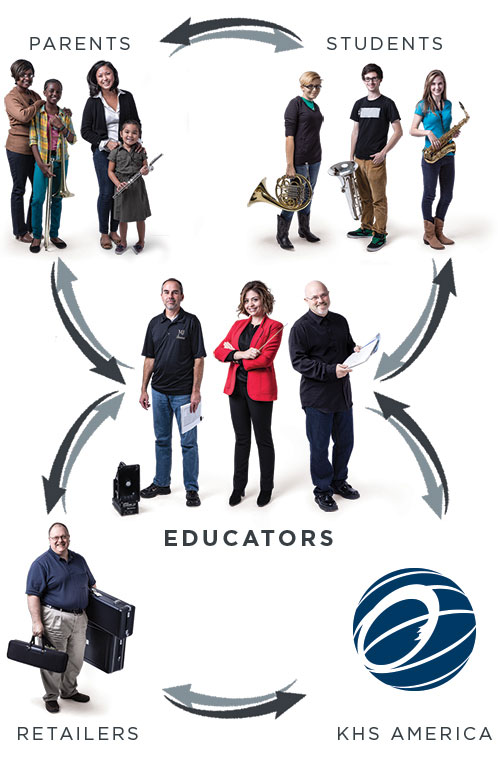We each have a unique style of learning. If you spend some time figuring out how you learn, you can set up your practice sessions for greater success and less frustration. In very general terms, we use aural, visual, kinesthetic methods to learn new skills. Let’s explore each of them.
Aural learners, pick things up more readily by ear. They can imitate a good tone or phrase after hearing it. Recordings, pitch pipes and live examples sound useful to aural learners.
Visual learners see the music before committing it to memory and showing them examples of posture or hand position help them learn. Mirrors, video and charts look good to visual learners.
Kinesthetic learners learn by feel. How the instrument feels in the players’ hands and the patterns of the keys or valves during a passage help these musicians learn. Pattern drills, body mapping, and ergonomics help a kinesthetic learner get the right feel.
While each of us tends to favor one of those three above the others, all of them are important. If you know that you make progress more quickly when you see (or hear or feel) something, you can pick strategies and resources to match that style of learning. Additionally, you can use your two less strong areas to reinforce your learning. In fact, your strongest style may not be the best way to solve the problem at hand (or eye or ear). Consider alternatives, which use one of the other areas.
To figure out your own style, spend the next few days listening to the words you use. Do you have lots of “I feel…” statements or are they “it sounds to me like…” instead? Pay attention to what you do to get comfortable and relax. Is it by looking at something (TV, art, your dog), or listening to music? Maybe you just can’t relax until you have on your favorite sweatpants and fuzzy kitty cat slippers. Just pay attention to these sorts of things and you’ll get a general sense of your preferences.
Learning about your learning also includes knowing how long you can concentrate before you need a break. Some folks can go for twenty minutes and others need to stop after fifteen. When you do take a break, try to keep it to a few minutes and don’t get wrapped up in something else. Text someone, get a drink of water, walk around a bit and get right back to work.
Finally, think about where you practice. Are there lots of distractions? Is there a bunch of noise or commotion going on? Are there lots of chances you’ll be interrupted by other friends or family members? Try to find a place where you won’t be either distracted (turn off your phone, it won’t kill you) or interrupted (tell your Mom you’ll take out the trash after you’re done practicing).
excerpt from “Music Practice Coach,” lanceladuke.com
About the Author
LANCE LADUKE is internationally known as an educator, performer and creator. He teaches at Carnegie Mellon University as Artist Lecturer in Euphonium, Freshman Advisor and Coordinator of Special and Creative Projects. Lance teaches business, marketing and communications as part of the CMU Music Entrepreneurship Program, coaches and mentors a variety of chamber ensembles and is also Adjunct Professor of Euphonium at Duquesne University. Lance was a member of Boston Brass and the US Air Force Band in Washington DC, has performed with the Philadelphia Orchestra and currently plays with the River City Brass. He has taught and/or given master classes at some of the world’s finest conservatories, including Juilliard, the Royal Academy of Music in London and the Hong Kong Academy for Performing Arts. Lance co-wrote and produced “Band Blast Off,” a highly successful band recruiting DVD and maintains an active speaking career, sharing his thoughts on practice, leadership, and self-development. His wildly successful book, “Music Practice Coach, Five Workouts to Get the Most Out of Your Practice Time!” is available as a free PDF at lanceladuke.com. Lance is an Educational Ambassador for Jupiter Band Instruments.
The content of this Blog article or Banded Story is the intellectual property of the author(s) and cannot be duplicated without the permission of KHS America and/or the author(s). Standard copyright rules apply.



 We look forward to the evolution of this exciting program, and welcome feedback on how we can further enhance the work that you do in music education.
We are excited to offer your program the opportunity to join the KHS America Academic Alliance today.
We look forward to the evolution of this exciting program, and welcome feedback on how we can further enhance the work that you do in music education.
We are excited to offer your program the opportunity to join the KHS America Academic Alliance today.